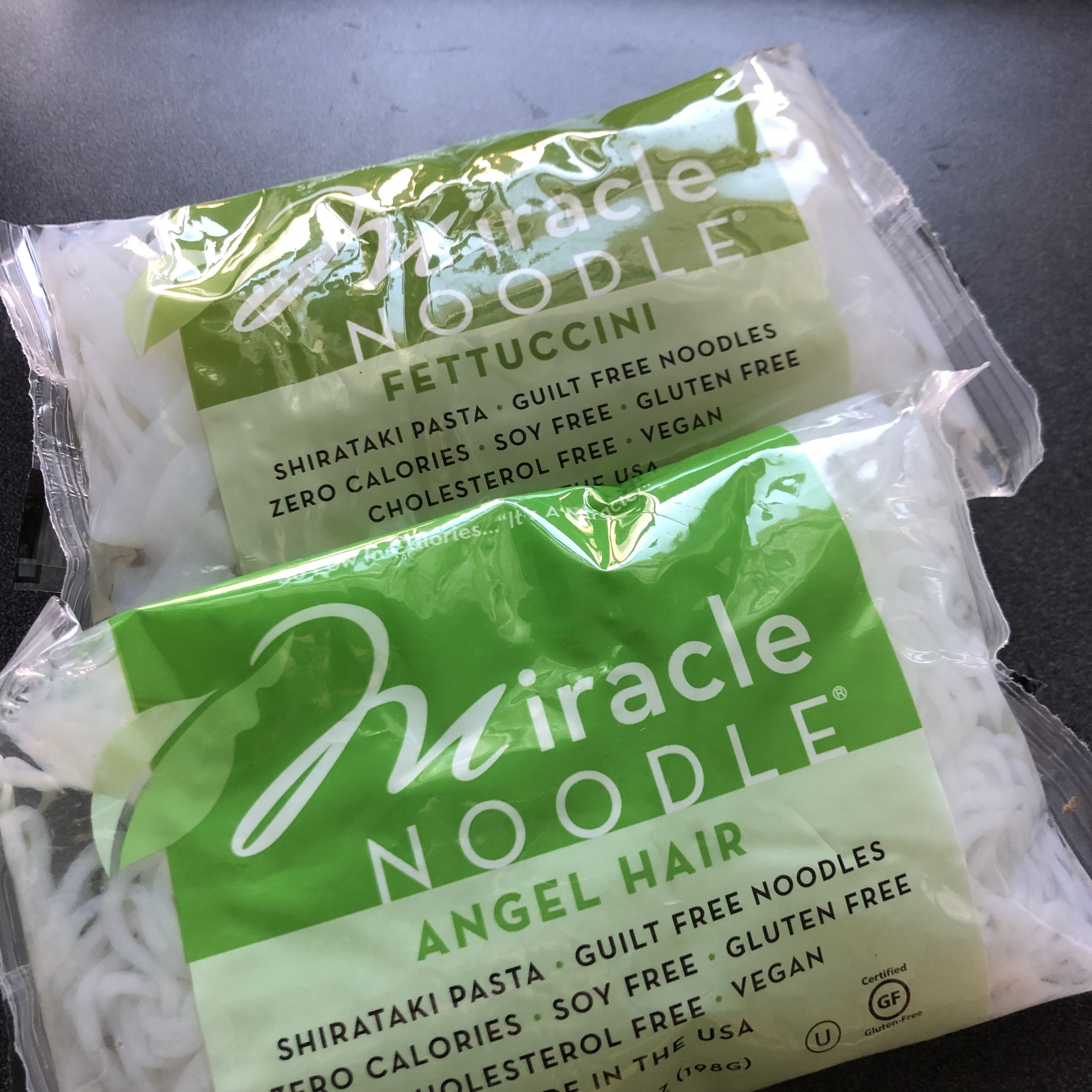Zero Calorie Miracle Noodles
Author & Photographer: Fiona Lu
Recently, my roommate and I came across a shocking, zero-calorie food on Amazon called Shirataki Miracle Noodles, and we decided to try them out. Made from the soluble fiber of the Konnyaku Imo plant root, these noodles praise themselves on being “remarkably low in calories” and “known for its health benefits for 2000 years in China and Japan.” With cutting season right around the corner, we were immediately sold by its convincing marketing and ordered a package of 6 individual packs. When we received them, however, we were a bit disillusioned to discover that they are preserved in a bag filled with mystery liquid and carry a suspiciously fishy odor. In hindsight, I guess there were a few warning signs that should’ve tipped us off. As if the fact that these noodles are sold on Amazon wasn’t concerning enough, they are advertised like one of those too-good-to-be-true ads that read: “Local Mother is Hated by Doctors for Discovering Miracle Health Food!” “GUILT FREE NOODLES, ZERO CALORIES, SOY FREE, GLUTEN FREE, CHOLESTEROL FREE, VEGAN, NON GMO” — of course we should have realized that the adjective “TASTY” was not included in the comically long list of benefits for a reason.
The noodles are a translucent white pigment and have a strange, crunchy chewiness comparable to undercooked vermicelli noodles, or jellyfish if you’ve ever tried it at an Asian restaurant. They taste like quite literally nothing, except the fishy smell may fool your taste buds. They are quite non-absorbent, so placing it in any broth or non-viscous sauce barely coats the noodles. Our first attempt at achieving flavor was to add soy sauce which ran right off the noodles like water on wax. The noodles come pre-cooked and recommend that you heat it in boiling water for two minutes, though that does little to alter its taste or appearance. Simply put, these noodles were not the new age, healthy instant ramen alternative we were hoping for.
Upon this retrospective epiphany, we were now faced with a different problem: what the hell are we supposed to do with the remaining five noodle packages that came in our bulk order? Determined not to let our money go to waste, we journeyed to Whole Foods for ingredients to masquerade these noodles as edible human food. Here is the recipe that we came up with:
2 tsp of sesame oil
1 tbsp of Shoyu soy sauce
2 tbsp of Annie Chun’s Pad Thai Sauce
1 package of Miracle Noodle Fettuccine
First, empty the contents of the Miracle Noodle package into a strainer and drain the fishy liquid. Rinse the noodles under warm water for a few minutes to clean off the residual fishy scent. Finally, place the noodles in a bowl, add the sauce ingredients, and mix together. Now you have a quick and easy college noodle meal that does not come with the health hazards of Instant Ramen.
You can add your own desired sauces for a personalized flavor; however, the key ingredient is Annie Chun’s Pad Thai Sauce because it is strong enough to mask the tricky fish scent in a delightfully sweet, tangy zest and thick enough to cling onto the slippery noodles, though any equally viscous sauce substitute will do the trick.
If you decide to try these noodles, do not be discouraged by your initial impressions. A simple sauce concoction is all it takes to transform Miracle Noodles from bland to a true miracle! The taste all depends on the strength and flavor of your base sauce. While I wouldn’t say Annie Chun’s Pad Thai Sauce makes Miracle Noodles my preferred meal over instant ramen, further experimentation with sauces may lead to a gourmet winning flavor that makes this low-calorie meal a college favorite.




